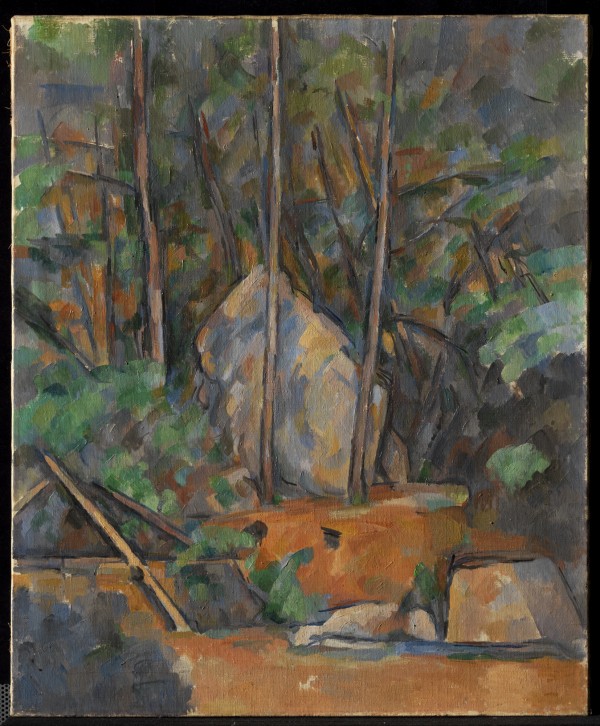Cistern in the Park of Chateau Noir (Citerne au Parc du Château Noir)
Cistern in the Park of Chateau Noir (Citerne au Parc du Château Noir)

About This Work
Provenance
Jos Hessel (1859–1942), Paris, by 1914; [sold to Paul Cassirer, 31 Mar. 1914]; sold to Rudolph W. Vollmoeller, Vaihingen-Stuttgart, 18 May 1916; by descent to Hans R. Vollmoeller, Uster, Switzerland, by 1950; sold to Mr. Richard H. Zinser, Forest Hills, NY, Oct. 1950; sold to Henry Pearlman, 1 July 1952; Henry and Rose Pearlman Foundation, after 1974.
Critical Perspective
Between 1899 and 1902, Cézanne rented a storage room at the Château Noir estate, on the road from his native Aix-en-Provence to the nearby village of Le Tholonet, and often painted on the grounds. The neo-Gothic buildings of this peculiar country manor were unfinished, giving it the appearance of a ruin. The original owner, who manufactured lampblack (a type of pigment made from soot), had - according to rumor - painted the entire mansion black and practiced black magic, or sorcery, there, supplying the name "The Black Castle."
The modern stone cistern at Château Noir seen at the left of this painting contrasts with the ancient boulder at the center; the rock's distinctive shape suggests the flint artifacts unearthed in the region. Local mythology also had it that the surrounding archaeological attractions and strange geological formations housed magical forces.
The characteristic pine trees of Provence provided shade from the Mediterranean sun in this cool site in the deforested region, where only evergreens would grow.
